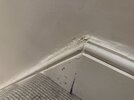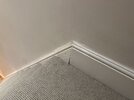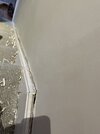Hi diynot folk,
I’m trying to get my Victorian skirting and dados in better shape for painting. I tried the sand and fill method but it still looked clogged and messy. I’m now attempting to strip them down with Nitromors but that last layer of (lead) paint is not budging.
What recommendations do you have? I’ve considered the following:
1. replacing the woodwork (nope - this leads to the stairs and that feels like more work than I can bear)
2. Peelaway - hmm, super expensive
3. Getting a heavy-duty chemical mask and sanding to the wood
4. Getting a heavy-duty chemical mask and lightly sanding the old paint just enough to paint over
Thoughts?
I’m trying to get my Victorian skirting and dados in better shape for painting. I tried the sand and fill method but it still looked clogged and messy. I’m now attempting to strip them down with Nitromors but that last layer of (lead) paint is not budging.
What recommendations do you have? I’ve considered the following:
1. replacing the woodwork (nope - this leads to the stairs and that feels like more work than I can bear)
2. Peelaway - hmm, super expensive
3. Getting a heavy-duty chemical mask and sanding to the wood
4. Getting a heavy-duty chemical mask and lightly sanding the old paint just enough to paint over
Thoughts?





